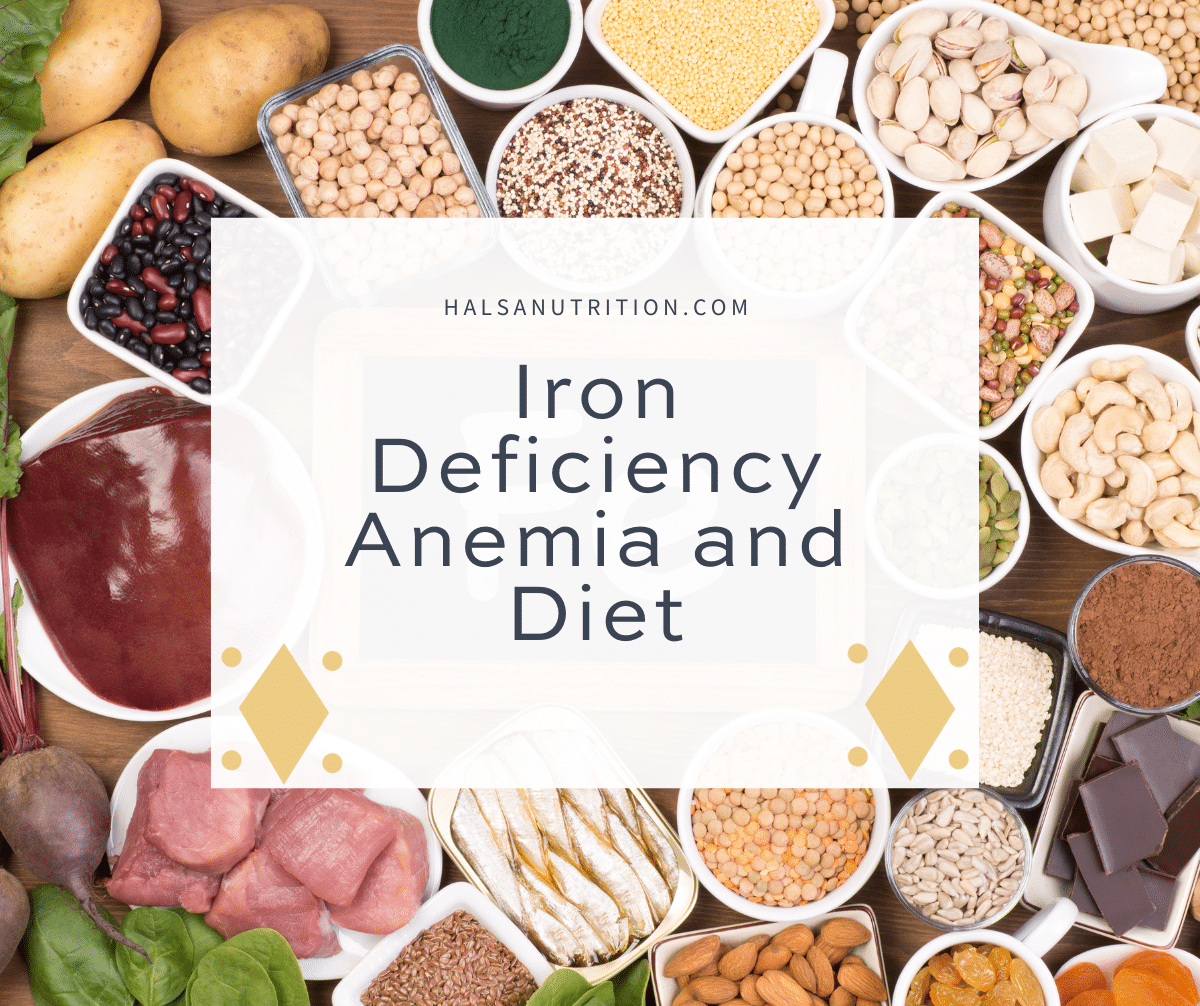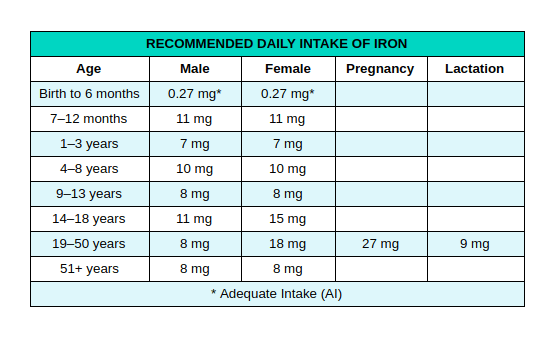
Iron Deficiency Anemia and Diet
Estimated reading time: 4 minutes
Iron deficiency anemia is the most common nutrient deficiency among young children and women of childbearing age. Let’s take a closer look at how to get adequate iron and what happens when we don’t.
What is Iron?
Many people know that iron is present in everyday objects like cars, dumbells, and appliances. However, did you know that iron is also found in your body and in the food you eat?
Iron is an essential mineral that your body needs to function properly. It’s found in hemoglobin, the protein in red blood cells that transports oxygen throughout your body. Iron is also found in myoglobin, a protein that stores and transports oxygen in your muscles.
Iron Deficiency Anemia
Iron deficiency anemia occurs when our body is deficient in iron. Children, teens, pregnant women, and women of childbearing age are at the greatest risk for iron deficiency anemia. Common symptoms include:
- fatigue,
- dizziness,
- headaches,
- sensitivity to cold,
- shortness of breath,
- and poor attention span and mental function.
How Much Iron Do I Need?
The daily recommended value for iron is usually between 7 and 18 milligrams. However, there are many factors that come into play when it comes to your specific iron needs. For example, if you are pregnant your recommended daily value could increase to as much as 27 milligrams.
Types and Sources of Iron
There are 2 categories of iron: heme iron and non-heme.
- Heme iron is found in animal products such as beef, pork, veal, chicken, fish, and shellfish. Red meat, dark meat poultry (thighs and legs), and organ meat such as liver are especially high in heme iron.
- Non-heme iron is iron that is found in plants and plant-based products such as beans, lentils, spinach, oats, dried fruits, nuts, chia seeds, tofu, wheat, and rice.
Heme iron from animal meats is the easiest way for your body to obtain iron. This is because your body absorbs 2-3x more iron from heme sources and animal meats tend to be higher in total content per serving to start.
That said, if you are a vegetarian or a vegan, you can still get enough iron in your diet, you just have to plan carefully. Talk to your dietitian or doctor about whether or not you need an iron supplement. In general, iron supplements are meant to be taken short-term, not long-term.
Iron Boosters
Vitamin C, vitamin A, and beta-carotene help increase your body’s absorption of iron. So eating foods high in these nutrients, such as citrus, bell peppers, melon, strawberries, carrots, sweet potato, kale, apricots, peaches, cabbage, broccoli, and tomatoes will help increase your iron intake.
Iron Inhibitors
Just like there are foods that can increase your body’s ability to absorb iron, there are foods that can decrease it as well. The following all reduce iron absorption by 60-70%:
- Dairy products
- Polyphenols found in whole grains
- Soy
- Legumes
- Tea
- Coffee
- Wine
If you are trying to boost your iron, consume these foods at separate times from your iron-rich foods or supplements. You can also counteract the effects of these foods with the addition of vitamin C-rich foods.
Recipes to Boost Your Iron Intake
To help prevent iron deficiency anemia, ensure you are getting enough iron by including plenty of high-iron meals in your weekly diet. Many dietitians also recommend eating iron-fortified breakfast cereals.

Here are a few recipes to get you started. Consider cooking with your cast iron skillet to add some extra iron to your meals!
Recipes for Non-Heme Sources of Iron
Recipes for Heme Sources of Iron
- FAMILY FAVORITE BEEF AND KALE TACOS
- SWEDISH MEATBALLS
- Turkey Burger Sliders (use dark meat turkey)
- Veggie Loaded Turkey Bolognese (use dark meat turkey)
About the Author:
Katelyn Greene is a Marblehead high school senior who is passionate about nutrition and is currently completing her senior project by interning with a few local dietitians, including myself. She will be studying nutrition this fall at the University of Massachusetts in Amherst.
This article was reviewed and edited by Maria Adams, MS, MPH, RDN.
Updated: April 2023


Leave a Reply